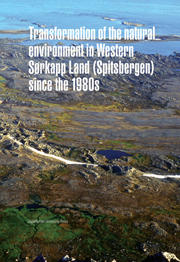Introduction
Published online by Cambridge University Press: 05 September 2014
Summary
Zdzisław Czeppe, a physical geographer, viewed Sørkapp Land as a potential geographic area for scientific research. He was a participant of the Polish expedition during the 3rd International Geophysical Year, which wintered on the northern coast of Hornsund Fjord on Isbjørnhamna bay in 1957–1958, and the summer expeditions of 1959 and 1960. Sørkapp Land, located south of the fjord, appeared to be an ideal place for research, which unfortunately could not be carried out at the time. However, he returned to western Sørkapp Land as a professor and the leader of Jagiellonian University expeditions in 1980 and 1981. He created a program of interdisciplinary research for this area, which was executed by the University's summer expeditions in the 1980s. Landscape analysis played the most important role in the research of abiotic environmental features, whereas botanical analysis was crucial in the research of biotic features. The former was carried out in 1981–1984 and 1986, and the latter in 1982 and 1985. Six physical geographers (Z. Czeppe, P. Gębica, K. Kalicki, M. Kuczek, P. Libelt and W. Ziaja) took part in field investigations of landscape, and two botanists (E. Dubiel and M. Olech) took part in field investigations of vegetation. Their published results constitute the first relatively complete and reasonably detailed (maps at a scale of 1 : 25 000–1 : 50 000) characterization of the natural environment of the area.
- Type
- Chapter
- Information
- Transformation of the Natural Environment in Western Sorkapp Land (Spitsbergen) since the 1980s , pp. 7 - 8Publisher: Jagiellonian University PressPrint publication year: 2011

